Crystallography-Common Crystal System and Mineral Habits
Crystal Systems
The crystallography branch of Geology has developed a descriptive terminology that is applied to crystals and crystal features in order to describe their structure, symmetry, and shape. This crystallography defines the crystal lattice which provides a mineral with its ordered internal structure. It also describes various types of symmetry. On the basis of symmetry, a mineral species may be categorized as six crystal systems thirty-two crystal classes. These systems include the isometric, hexagonal, tetragonal, orthorhombic, monoclinic, and triclinic crystal systems. The hexagonal crystal system is further broken down into hexagonal and rhombohedral divisions.
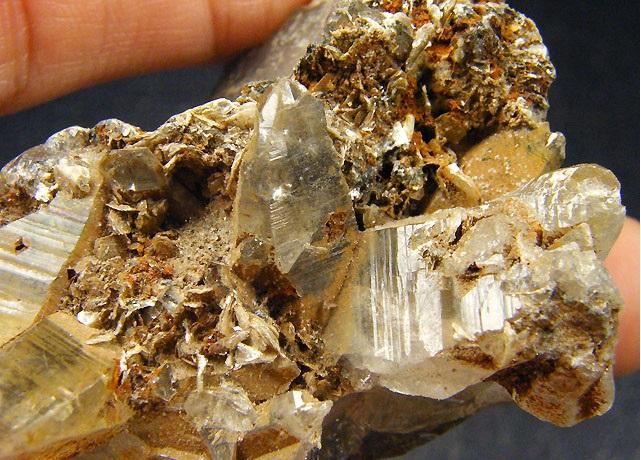
A crystal form is a set of planar faces which are geometrically equivalent and whose spatial positions are related to one another by a specified set of symmetry operations. If one face of a crystal form is defined, the specified set of point symmetry will determine all of the other faces of the crystal form. Apart from this, Every crystal class will share a characteristic symmetry element with the other members of its system. For example, all crystals of the isometric system possess four 3-fold axes of symmetry which proceed diagonally from corner to corner through the center of the cubic unit cell. In contrast, all crystals of the hexagonal division of the hexagonal system possess a single six-fold axis of symmetry.
Also, read- Basic Type of Rock Sampling in Geology
Each system is defined by a combination of three factors:
· Number of axes
· The lengths of the axes
· The angles at which the axes meet
An axis is a direction between the sides. The shortest one is A. The longest is C. There is a B axis as well.
The Isometric crystal System
The isometric or Cubic crystal system is the simplest crystal system. It has three axes, all of which are the same length. The three axes in the isometric system all intersect at 90º or Perpendicular to each other. Because of the equality of the axes, minerals in the cubic system are isotropic. Crystals of the isometric system may possess six 2-fold axes of symmetry that extend from the center of each edge of the crystal through the origin to the center of the opposite edge. Minerals of this system may demonstrate up to nine different mirror planes. Minerals that form in the isometric system include all garnets, diamond, fluorite, gold, lapis lazuli, pyrite, silver, sodalite, sphalerite, and spinel.
Home doctor medicine for Every household-Click here
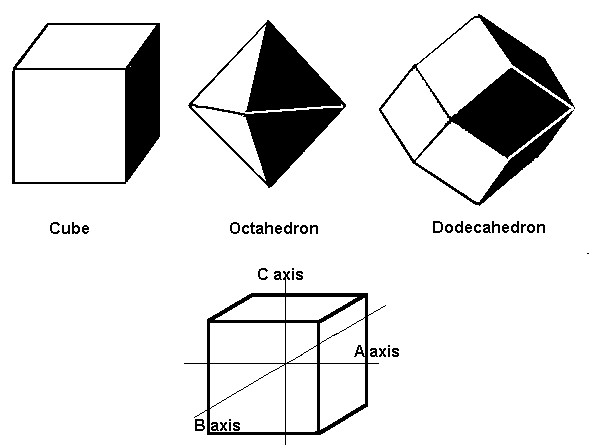
The Tetragonal System
The tetragonal system also has three axes that are perpendicular to each other. It differs from the isometric system in that the C axis is longer than the A and B axes, which are the same length. Minerals of this system all possess a single 4-fold axis of symmetry. They may possess up to four 2-fold axes of rotation, a center of inversion, and up to five mirror planes. These minerals tend to produce short crystals of prismatic habit. Minerals that form in the tetragonal system include apophyllite, idocrase, rutile, wulfenite, and zircon.

The Orthorhombic crystal System
The orthorhombic system has three axes, all of which meet at 90º to each other. However, all the axes are of different lengths. Crystals of this system uniformly possess three 2-fold rotation axes or three mirror planes. The holomorphic class demonstrates three 2-fold symmetry axes and three mirror planes as well as a center of the plane. Other classes may show three 2-fold axes of rotation or one 2-fold rotation axis and two mirror planes. Minerals that form in the orthorhombic system include andalusite, celestite, chrysoberyl, hypersthene, olivine, peridot, sulfur, and topaz.
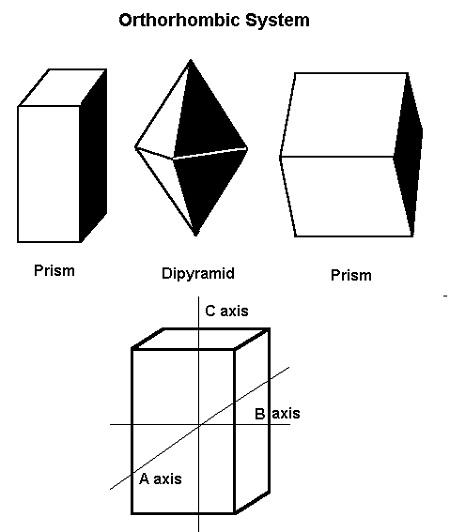
The Monoclinic crystal System
Crystals of the monoclinic system are referred to as three unequal axes. In the monoclinic system, two of the axes, A and C, meet at 90º, but axis B does not. All axes in the monoclinic system are of different lengths. Minerals that form in the monoclinic system include azurite, datolite, diopside, malachite, orthoclase feldspars, staurolite, sphene, and spodumene.
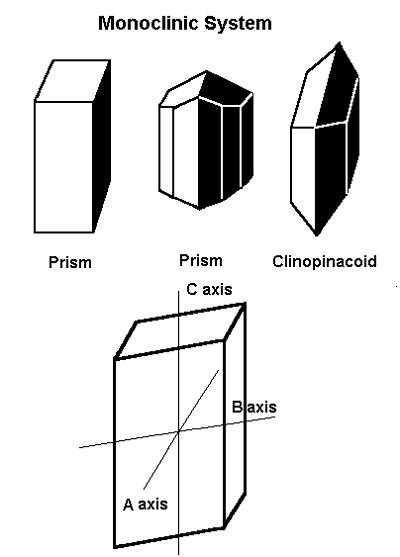
The Triclinic crystal Systems
Crystals of the triclinic system have three unequal axes, all of which intersect at oblique angles. None of the axes are perpendicular to any other axis. Crystals of the triclinic system possess only a 1-fold symmetry axis. Crystals of this system possess no mirror planes. The holomorphic class demonstrates a center of plane symmetry. Mineral species of the triclinic class include plagioclase and axinite. These species tend to be of tabular habit.
Home doctor medicine for Every house hold-click here
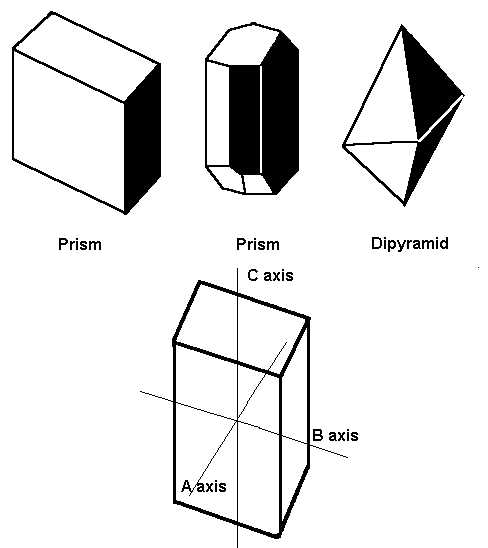
The Hexagonal crystal System
Minerals of the hexagonal crystal system are referred to as three crystallographic axes which intersect at 120° and a fourth which is perpendicular to the other three, and this gives the crystals six sides. Three of these are equal in length and meet at 60º to each other. The C or vertical axis is at 90º to the shorter axes. this system is divided into hexagonal and rhombohedral (Trigonal subsystem). All crystals of the hexagonal division possess a single 6-fold axis of rotation. In addition to the single 6-fold axis of rotation, crystals of the hexagonal division may possess up to six 2-fold axes of rotation. They may demonstrate a center of the plane and up to seven mirror planes. Crystals of the rhombohedral all possess a single 3-fold axis of rotation rather than the 6-fold axis of the hexagonal division. Minerals that form in the hexagonal system include apatite, beryl, and zincite.
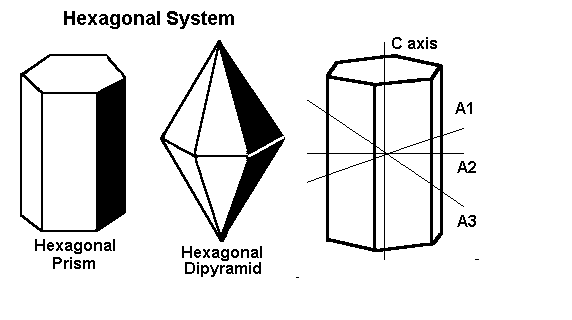
The Trigonal Subsystem
Mineralogists sometimes divide the hexagonal system into two crystal systems, the hexagonal and the trigonal, based on their external appearance. Corundum, both ruby, and sapphire are sometimes described as a trigonal crystal system.
Amorphous minerals don’t form in any of these crystal systems. Examples of amorphous materials are amber, glass (including obsidian) opal, and moldavite.
Sources-gemsociety.org, geologyin.com
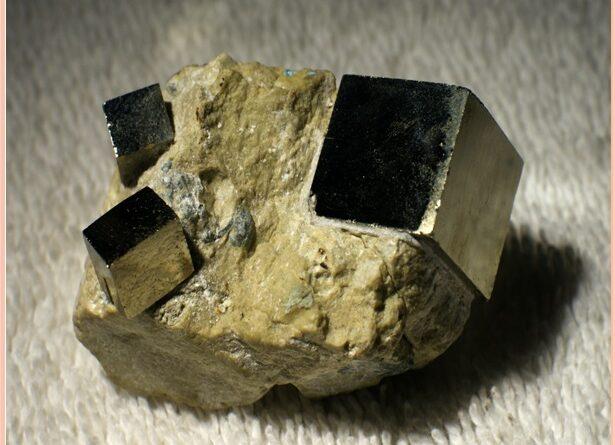
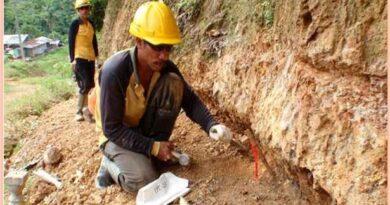


Pingback: What are Dam and Their Type - Geotourism